The Do’s and Don’ts of Sushi: How to eat sushi like a pro
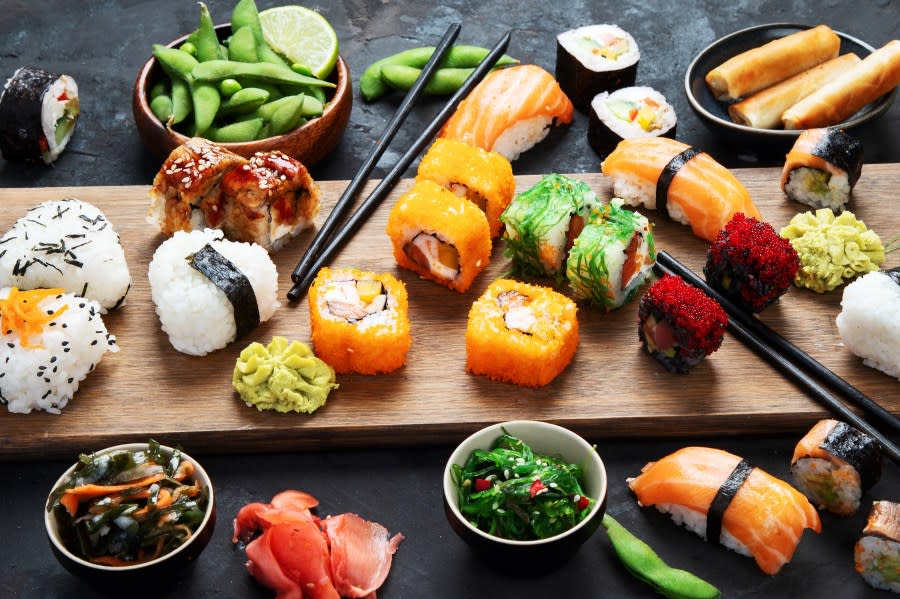
TAMPA (BLOOM) – Sushi has transcended from being a traditional Japanese delicacy to a global culinary phenomenon. However, as the dish gains international popularity, the nuances of its traditional etiquette are often lost in translation. This article aims to enlighten you on the intricacies of sushi etiquette, helping you enjoy this exquisite cuisine like a seasoned pro. Whether you’re a sushi novice or a sushi pro, our guide will enrich your dining experience.
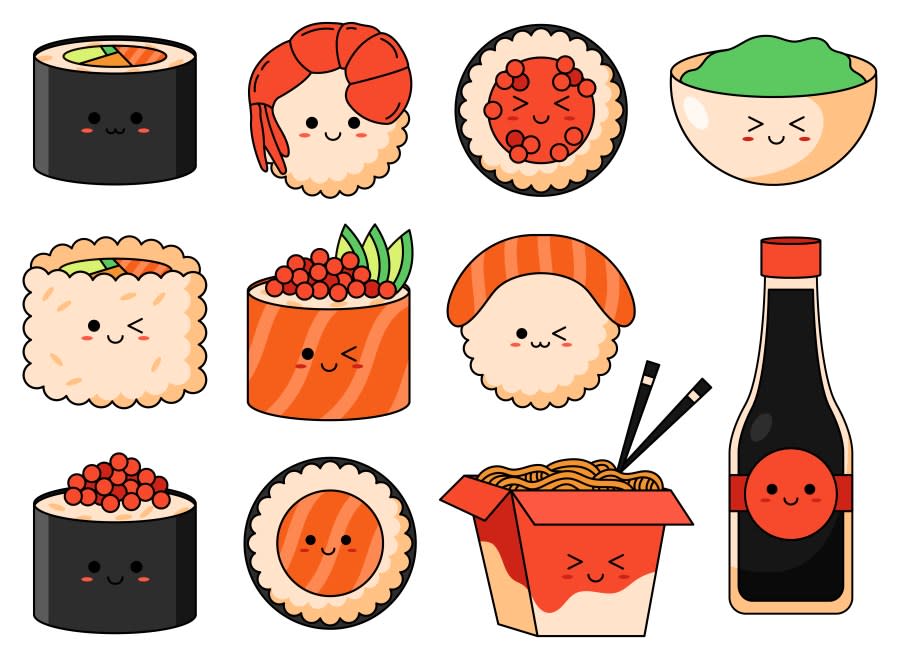
Why Sushi Etiquette Matters
Originating as a method to preserve fish in ancient Japan, sushi has evolved into an art form, celebrated not just for its flavors but also for its presentation and the craftsmanship behind it. Understanding sushi etiquette isn’t just about following rules; it’s about appreciating the skill, effort, and tradition that goes into making each bite memorable. Respecting the sushi chef and their craft elevates your dining experience from a mere meal to a cultural encounter.
The Basics: What You Need to Know Before You Go
Before you slide up to the sushi bar or settle at a table, it’s good to know some fundamentals.
Chopsticks or Fingers?
Both are acceptable, but each type of sushi lends itself better to one or the other. Because what’s a culinary experience if you can’t even lift the food to your mouth without committing a social faux pas, right?
Waribashi: The Disposable Ones
You’ve seen these. You’ve broken these apart, probably unevenly, leading to that awkward “one-stick-is-shorter-than-the-other” situation. Waribashi are typically made from bamboo and are often found in more casual settings or take-out sushi places. They’re like the fast-food drive-through of the chopstick world—convenient but not exactly haute cuisine.
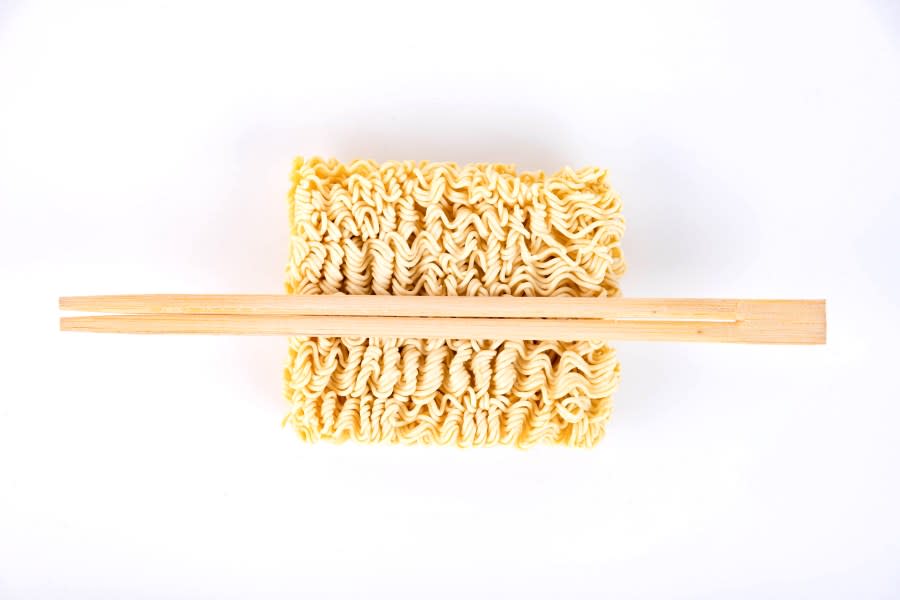
Hashi: The Reusable Ones
If you’re dining in a swanky place where the chopsticks don’t come wrapped in paper with instructions on how to use them (as if you’ve never battled with chopsticks before), you’re probably dealing with hashi. They’re often made of lacquered wood, bone, or even ivory if you’re getting really fancy. Use them wisely; they’re the Cadillac of chopsticks.
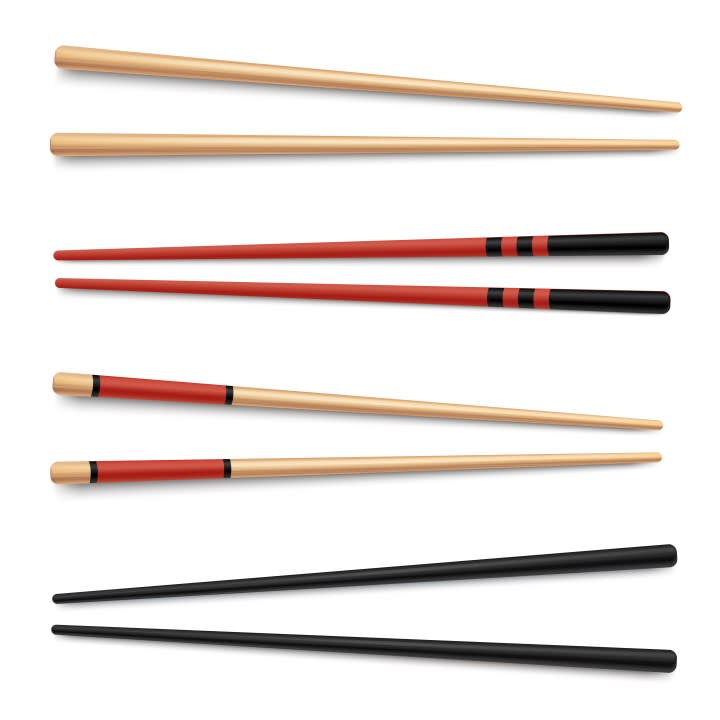
Metal Chopsticks: The Overachievers
Ah, the domain of Korean BBQ and some upscale Japanese establishments. These metal chopsticks are heavy, cold, and unforgiving—kind of like that high school gym teacher who made you climb the rope. But man, do they make you feel like you’re in a James Bond movie when you use them.
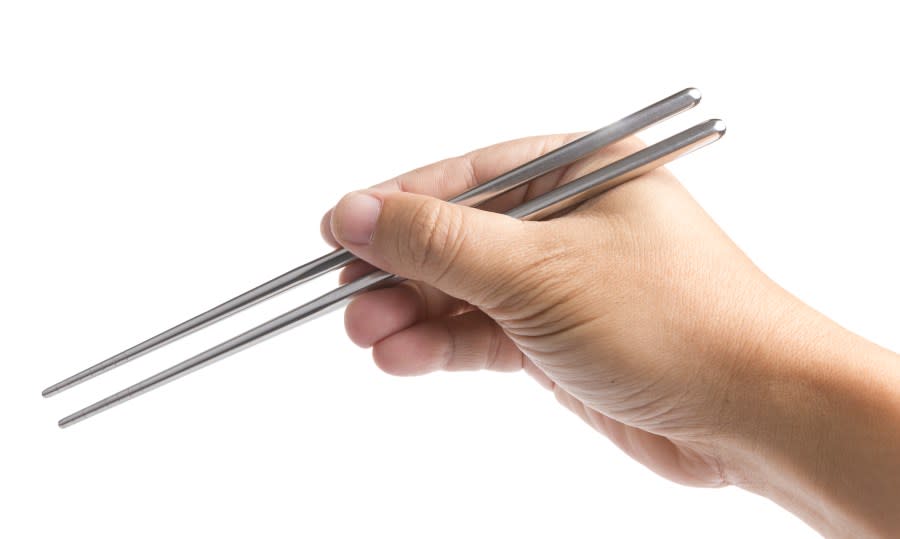
Now, About Forks…
Yes, you CAN use a fork, but should you? A fork in a sushi restaurant is like showing up to a black-tie event in sweatpants. Technically, it’s possible, but you’ll be missing out on the traditional experience. Forks are usually only provided for young children or those who are physically unable to use chopsticks. Otherwise, it’s best to go with the flow—whether that’s a bamboo waribashi or a swanky hashi—and embrace the chopstick challenge.
So the next time you’re about to dive into that plate of delectable sushi, consider your utensil options. After all, it’s not just about the food; it’s about the full, cultural, don’t-embarrass-yourself-in-public experience!
Sushi Bar vs. Table
Sitting at the bar allows you a front-row view of the chef’s craftsmanship. Table seating offers a more private experience.
How to Read a Sushi Menu
Get familiar with terms like Nigiri (hand-pressed sushi), Sashimi (sliced raw fish), and Maki (rolled sushi) to know what you’re ordering.
The Do’s: Enhancing Your Sushi Experience
Ordering Like a Pro
Start with lighter fish like snapper or flounder, and move towards fattier fish such as salmon or tuna as your meal progresses.
Eating the Sushi
Use chopsticks for sashimi and certain rolls but feel free to use your fingers for nigiri.
Condiments and Accompaniments
Wasabi, soy sauce, and pickled ginger (Gari) are more than just side options; they’re integral to the sushi experience when used correctly.
Nigiri
How to Eat: Nigiri is traditionally eaten with the fingers, although chopsticks are also acceptable. The fish should touch your tongue first, so flip the nigiri upside down to dip it lightly in soy sauce.
Common Mistakes: Dipping the rice-side into the soy sauce is a faux pas as it makes the rice disintegrate, compromising the integrity of the sushi.
Additional Etiquette: Eat the nigiri in one bite if possible, to enjoy the balance of flavors the chef intended.
Sashimi
How to Eat: Sashimi is best eaten with chopsticks. It’s usually just the fish, served without rice.
Common Mistakes: Overloading sashimi with wasabi or soy sauce can be viewed as insulting the chef’s skills, as it masks the natural flavors of the fish.
Additional Etiquette: Some people like to place a small amount of wasabi directly on the sashimi before dipping it lightly in soy sauce. This method highlights the fish’s natural flavor.
Maki Rolls
How to Eat: Maki rolls are versatile; you can use either chopsticks or your fingers.
Common Mistakes: Avoid dissecting the roll into smaller pieces. It’s crafted to be enjoyed in one bite to capture all the flavors together.
Additional Etiquette: Unlike sashimi and nigiri, rolls often have sauces and additional seasonings, making it unnecessary to dip them in soy sauce most of the time.
Temaki (Hand Rolls)
How to Eat: This is a type of sushi meant to be eaten with your hands. It’s usually wrapped in a cone of seaweed.
Common Mistakes: Don’t wait too long to eat it; the seaweed will lose its crispness.
Additional Etiquette: It’s intended to be eaten as soon as it’s served and in as few bites as possible, to enjoy the play of textures and flavors.
Chirashi
How to Eat: Chirashi is served in a bowl with vinegared rice and various toppings. Use chopsticks and eat in a manner similar to how you would eat a rice bowl.
Common Mistakes: Mixing everything together like a salad negates the chef’s intention of having separate and distinct flavors.
Additional Etiquette: It’s recommended to taste each topping individually at first and then try different combinations as you eat.
Understanding the specific etiquette for each type of sushi will not only make you a more informed diner but also deepen your appreciation for this intricate and traditional cuisine. Whether you’re eating a simple roll or indulging in high-end sashimi, these guidelines will help you enjoy sushi the way it was intended to be enjoyed.
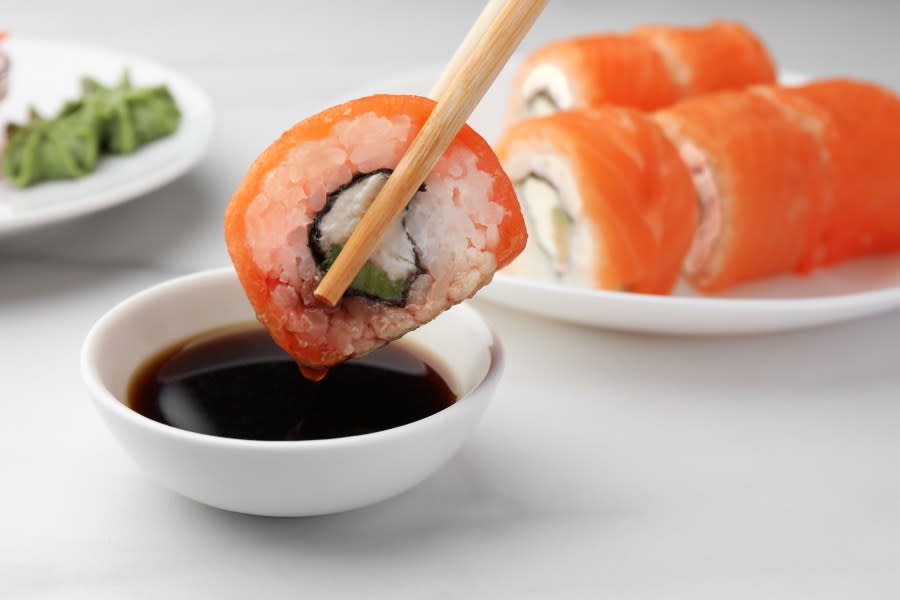
The Don’ts: Common Faux Pas to Avoid
Ordering Faux Pas
Don’t order all your sushi at once; this allows the chef to pace your meal and perhaps offer you the day’s freshest options.
Eating Faux Pas
Never dip the rice side of the nigiri into soy sauce, as it can make the rice fall apart. Also, refrain from mixing wasabi into your soy sauce—it’s considered poor form.
How to Appreciate the Sushi Chef’s Craft
Observing the chef’s technique adds another layer of appreciation to your meal. And don’t forget to say “itadakimasu” before you start eating and “gochisosama” after you’ve finished to express gratitude.
Advanced Tips for the Sushi Aficionado
Those well-versed in sushi should look out for seasonal fish offerings, which are a real treat. When it comes to beverages, pairing sushi with sake can bring out unique flavors in both the drink and the food.
Sushi for Every Wallet: From Supermarket Steals to Omakase Splurges
Ah, the age-old question: How can you enjoy sushi without breaking the bank—or should you even try? Fear not, sushi lovers; there’s something for every budget. Just remember, as with most things in life, you often get what you pay for. Let’s break it down.
Supermarket Sushi: Ballin’ on a Budget
We’ve all been there—roaming the grocery aisles and suddenly feeling that sushi craving kick in. Supermarket sushi is for those times when you’re on a Netflix binge and leaving the house seems as daunting as climbing Everest. While it won’t offer the same exquisite flavors and craftsmanship as specialty sushi restaurants, it’s often surprisingly decent, especially for the price. Just make sure to check the sell-by date!
Budget Tip: Supermarkets often discount their sushi towards the end of the day. However, this is a gamble with freshness, so proceed with caution.
Conveyor Belt Sushi: Mid-range Marvel
If you’re looking for something that offers a step-up in quality without requiring you to take out a second mortgage, conveyor belt sushi is your friend. This is like the fast food of the sushi world, but in a good way. The sushi comes by on a conveyor belt, and you grab what you like. Prices are often color-coded based on the plate’s design.
Budget Tip: Stick to the basic rolls and nigiri for the best value. The fancier stuff can quickly add up.
Traditional Sushi Restaurants: Pricier but Worth It
Now we’re talking. Fresh fish, skilled chefs, and a relaxing atmosphere. This is where you go to enjoy sushi as an experience, not just a quick meal. The quality of the ingredients and the chef’s expertise justify the higher prices.
Budget Tip: If you go during off-peak hours, some places offer specials or ‘happy hour’ pricing on certain rolls and drinks.
Omakase: For Those Special Occasions (or When You Win the Lottery)
Omakase means “I’ll leave it up to you” in Japanese, and it’s the culinary equivalent of a trust fall—with your wallet. The chef selects a series of dishes based on what’s freshest that day, and you get to sit back and enjoy the ride. This is the epitome of sushi dining and can cost anywhere from $100 to $500 per person, or even more.
Budget Tip: There is no budget tip here. This is the “treat yourself” of sushi experiences. Save up for it, and savor every moment.
So there you have it—from the sushi you eat in your pajamas to the sushi you dress up for, there’s a range of options to suit every budget. Just remember: The value of the experience often correlates with what you’re willing to spend. Happy dining!
Whether you’re new to the world of sushi or looking to brush up on your etiquette, we hope this guide has been enlightening. With these tips in your culinary toolkit, you’re well on your way to becoming a sushi pro.
So there you have it! A comprehensive guide to navigating the nuanced world of sushi etiquette, from ordering like a pro to understanding the significance of each delicious bite. Happy dining!
Follow me for more like this!
Want more behind-the-scenes content, exclusive sneak peeks, and inspiring stories like this? Follow me on Instagram! 📷 I share my latest adventures, interviews, and features, giving you a glimpse into the exciting world of lifestyle, health, and wellness. From garden tours to culinary creations, and much more, my Instagram is your ticket to staying connected and discovering what makes Tampa Bay so vibrant.
Click the link below to follow me and never miss an update! Let’s grow together! ⬇️
Copyright 2024 Nexstar Media, Inc. All rights reserved. This material may not be published, broadcast, rewritten, or redistributed.
For the latest news, weather, sports, and streaming video, head to WFLA.

